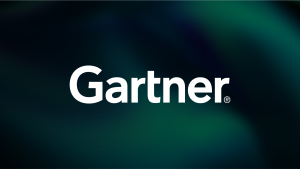La gestion de stacks technologiques complexes et la garantie d’un temps de disponibilité continu sont des défis cruciaux pour les équipes d’ingénierie modernes. La réaction aux problèmes après qu’ils se produisent entraîne souvent des temps d’arrêt coûteux et la frustration des clients. La solution ? Le suivi proactif des performances. Avec New Relic AI, vous pouvez passer du monitoring réactif à un monitoring proactif en vous servant de l'IA pour prédire les problèmes avant qu'ils ne se produisent, identifier les tendances et résoudre les problèmes plus rapidement.
New Relic AI est le premier assistant d'observabilité GenAI qui combine les principaux grands modèles de langage (LLM) avec la plateforme de données New Relic pour comprendre à la fois votre système et la plateforme New Relic elle-même. Grâce à cela, vous tirez des informations plus approfondies de la masse de données télémétriques collectées en utilisant le langage courant.
Dans ce billet de blog, vous apprendrez à utiliser New Relic AI pour :
- Analyser la tendance des performances
- Identifier les anomalies
- Détecter les lacunes de monitoring
- Mettre en place des moniteurs synthétiques
Bien démarrer avec NRAI
Bien qu'actuellement disponible en avant-première seulement, NRAI est simple à activer. Pour commencer, cliquez sur Ask AI (Demander à l’IA) dans le coin supérieur droit de n’importe quelle page, puis cliquez sur Get Started (Commencer).
Vous êtes invité à consulter les conditions spécifiques à l'IA générative. Si vous n'avez pas encore accepté la politique de préversion de New Relic, vous êtes invité à la consulter ici. Cliquez sur Accepter. Lorsque vous avez terminé, une fenêtre de chat s'affiche.
Vous pouvez alors interagir avec l'assistant d'IA qui vous aide à monitorer et à diagnostiquer votre système.
Analyse les tendances des performances
Le monitoring proactif commence avec la compréhension des performances historiques de vos services. En analysant les tendances dans le temps, vous pouvez repérer les endroits qui peuvent nécessiter votre attention avant qu’ils ne deviennent des problèmes graves.
Pour commencer, vous pouvez demander à NRAI de résumer les performances d’un service particulier sur une période donnée.
Quelles sont les performances du service de
catalogue au cours de la dernière heure ?NRAI récupère les métriques de performance pertinentes, notamment les transactions, la durée moyenne et le taux d’erreur, et vous fournit un aperçu rapide de l’état du service, comme dans l’exemple ci-dessous.
Dans l'exemple ci-dessus, NRAI montre les performances du service de catalogue comprenant les transactions, la durée moyenne et le taux d’erreur. Vous pouvez également demander à NRAI de se concentrer sur une métrique particulière comme le taux d’erreur.
Y a-t-il eu des erreurs dans ce service ?NRAI peut garder le contexte et comprend que vous souhaitez récupérer les erreurs de transaction sous « catalogue-service » au cours de la dernière heure. Il convertit le langage naturel en une requête New Relic Query Language (NRQL) et indique s'il y a eu des erreurs dans votre service.
En outre, vous pouvez demander une explication détaillée de ces erreurs et rechercher leurs causes sous-jacentes.
Ici, New Relic AI affiche la liste de toutes les erreurs sous catalogue-service ainsi que tous les attributs associés. Vous pouvez explorer davantage les détails de chaque erreur. Il suffit de poser la bonne question.
Un autre point intéressant à noter est que les métriques affichées dans le cadre de l’analyse des performances varient en fonction du service particulier qui est analysé. Par exemple:
Quelles sont les performances du service frontend
au cours des dernières 24 heures ?Maintenant que nous posons des questions sur une application de navigateur, NRAI récupère les métriques liées à l'application de navigateur.
Dans l'exemple ci-dessus, NRAI récupère la durée moyenne du frontend, la moyenne du FCP (First Contentful Paint) et les métriques moyennes du FCP au cours des dernières 24 heures.
Pour garantir la stabilité à long terme, vous pouvez comparer les performances sur différentes périodes. Vous pourrez ainsi mettre en évidence des tendances qui pourraient signaler des problèmes futurs.
Comparer les performances du service frontend au cours des
dernières 24 heures à celles de la semaine dernière.Avec cette demande, notre assistant GenAI vous aide à voir si les performances déclinent progressivement ou si les pics deviennent plus fréquents, ce qui pourrait indiquer des problèmes plus profonds.
Dans cet exemple, la durée moyenne du frontend s'est améliorée de 2 %, ce qui montre une amélioration globale.
Identification des anomalies
Une fois que vous avez analysé les tendances des performances, l'étape suivante du monitoring proactif consiste à identifier les anomalies, c'est-à-dire des modèles ou des comportements inhabituels qui pourraient signaler un problème. Demandez simplement à NRAI de mettre en évidence les anomalies récentes. Vous pouvez commencer par demander à NRAI de détecter toute activité inhabituelle ou tout pic dans les métriques clés (le taux d’erreur ou le temps de réponse, par exemple), ou même obtenir un aperçu des anomalies dans votre stack.
Y a-t-il eu des anomalies dans l’un de mes services au cours
des dernières 24 heures ?Après avoir analysé votre stack, NRAI indique toute anomalie dans vos services, telle que des pics soudains, la réduction des opérations d'E/S, les taux d'erreur, etc.
Dans l'exemple ci-dessus, New Relic AI a détecté deux anomalies :
- La réduction des opérations de lecture et d'écriture
- L'augmentation du temps d'écriture
Il précise également le contexte des anomalies et montre les étapes réalisables pour résoudre le ou les problèmes de performances associés.
Mise en place des moniteurs synthétiques
Le monitoring synthétique simule les interactions des utilisateurs avec vos applications pour détecter les problèmes potentiels avant qu'ils n'aient un impact sur les utilisateurs réels. Par exemple, NRAI peut vous aider à mettre en place un moniteur synthétique qui teste la disponibilité de vos services à intervalles réguliers. Cela garantit que toute dégradation des performances est détectée rapidement.
Pour commencer, vous pouvez demander à New Relic AI des recommandations pour le monitoring synthétique.
Dans l'exemple ci-dessus, NRAI analyse le stack pour identifier les entités présentant des anomalies et suggère de configurer des moniteurs synthétiques sur celles-ci. Par défaut, NRAI crée des vérifications ping pour vos services et applications. Cependant, la solution peut vous aider à configurer un moniteur synthétique plus avancé, tel qu'un navigateur scripté ou un test d'API. Ces types de moniteurs vous permettent de simuler des interactions utilisateur ou des appels d'API pour garantir que votre application est non seulement accessible, mais fonctionne également correctement.
En configurant des moniteurs synthétiques, vous pouvez détecter les problèmes avant qu'ils n'aient un impact sur les utilisateurs réels, garantissant ainsi une expérience fluide pour tous ceux qui interagissent avec vos services.
Détection des lacunes de monitoring
Un élément crucial du monitoring proactif consiste à garantir que l’ensemble de votre stack est couvert par des alertes et des outils de monitoring. En cas d'absence de couverture dans des domaines clés, vous pourriez être pris au dépourvu par certains problèmes. Pour identifier les services non monitorés, vous pouvez commencer par demander à l’assistant de trouver les lacunes dans votre stack. Ou plus précisément, vous pouvez lui demander de signaler les zones de votre stack qui ne sont pas couvertes par des alertes.
Montrer toutes les entités qui ne sont pas
couvertes par une alerte.Vous pouvez également demander à NRAI de trouver le manque de couverture dans votre stack.
Trouver les endroits qui ne sont pas couverts
dans mon stack.L'invite ci-dessus générera probablement une liste d'entités non couvertes par des alertes, ce qui vous permet de savoir quelles sont les parties de votre système qui nécessitent plus d'attention afin d'en informer les équipes qui travaillent sur les problèmes actuellement en cours.
Comme suggéré dans l'exemple, vous pouvez affiner votre recherche en spécifiant le type d'application sur laquelle vous souhaitez vous concentrer.
Les exemples ci-dessus montrent la liste des services de monitoring des performances des applications (APM) qui ne sont pas couverts par les conditions d'alerte. Une fois ces manques identifiés, vous pouvez prioriser la configuration des alertes pour les services les plus critiques. Vous pouvez également aller plus loin et demander à New Relic AI des recommandations sur les alertes à configurer en fonction des incidents passés.
Ainsi, vous pouvez vous assurer que vos services essentiels sont toujours monitorés et ainsi éviter que des problèmes importants ne passent inaperçus.
Conclusion
New Relic AI transforme la façon dont vous monitorez votre stack et facilite la détection des problèmes avant qu'ils ne s'aggravent. En utilisant l'assistant basé sur l'IA pour alerter, analyser les tendances, enquêter sur les erreurs et configurer des moniteurs synthétiques, vous pouvez passer d'un monitoring réactif à un monitoring proactif, ce qui garantit des opérations plus fluides et moins d'incidents.
Étapes suivantes
L’IA générative a changé presque tout dans le secteur de l’observabilité et son adoption est la seule voie à suivre. Quand vous êtes prêt à vous lancer :
- Inscrivez-vous gratuitement à New Relic pour explorer ses fonctionnalités, dont New Relic AI, et commencer à analyser vos données de performances.
- Pour un aperçu complet et un guide de configuration, consultez la documentation officielle pour bien démarrer avec le monitoring de New Relic AI.
- Découvrez comment New Relic AI traduit le langage naturel en NRQL pour obtenir des informations rapides.
Les opinions exprimées sur ce blog sont celles de l'auteur et ne reflètent pas nécessairement celles de New Relic. Toutes les solutions proposées par l'auteur sont spécifiques à l'environnement et ne font pas partie des solutions commerciales ou du support proposés par New Relic. Veuillez nous rejoindre exclusivement sur l'Explorers Hub (discuss.newrelic.com) pour toute question et assistance concernant cet article de blog. Ce blog peut contenir des liens vers du contenu de sites tiers. En fournissant de tels liens, New Relic n'adopte, ne garantit, n'approuve ou n'approuve pas les informations, vues ou produits disponibles sur ces sites.



